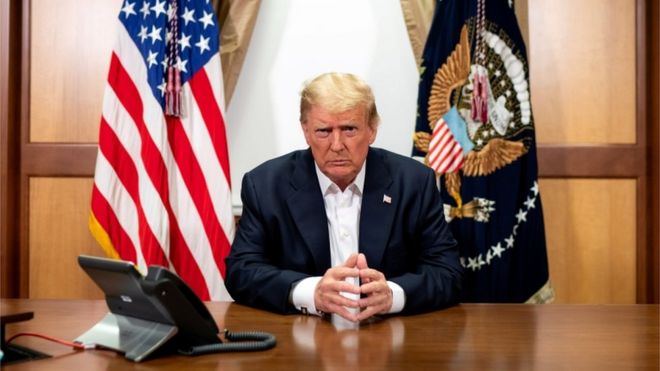The United States Presidential Election on November 3 is rapidly approaching and President Donald Trump and his Democratic challenger, former Vice President, Joe Biden, are in the final stretch of campaigning.
But to understand how the country’s next leader will be chosen, one must first understand a system known as the Electoral College.
- ‘My aunty’s husband defiled me after making me watch porn movie’
- NAPTIP Kano zonal office records 1,500 child labour,rape cases
In the US, the president and vice president are not decided by which candidate receives the most votes overall in the country, even though US voters do directly select a preferred choice on their ballots.
Instead, it all comes down to Electoral College voters.
Who are these Electoral College voters?
Under this state-based system, every state has a group of “electors” who are chosen in most cases by political parties in that state.
These electors actually cast the deciding votes for the presidential and vice-presidential candidates.
In 48 states, these electors “pledge” to vote for the presidential and vice-presidential candidates that receive the most votes in their respective states.
Two states – Maine and Nebraska – have slightly different systems: Two electors “pledge” to vote for the candidate that wins the state’s overall popular vote, while a third elector “pledges” to vote based on which candidate wins the most Congressional districts in that state.
While the presidential election is on November 3, the Electoral College electors will vote on December 14.
How many electors does each state have?
The number of electors a state has in a presidential election cycle is directly proportional to how many elected officials to represent that state in the House of Representatives and the Senate, collectively known as the US Congress.
Congressional seats are divvied up in a specific way, too.
The US House of Representatives counts 435 seats, which are allocated to the country’s 50 states.
The seats are apportioned based on each state’s population, which is determined in a count of US citizens known as the census. That count is done every 10 years.
Every state, even those with tiny populations, is guaranteed at least one seat in the House of Representatives.
Meanwhile, every state, regardless of population, elects two Senators to the US Senate. That chamber has 100 seats.
So, there is a total of 535 electors for 50 US states in the presidential election cycle.
The federal District of Columbia, home to the US capital, also gets three electors, making the total number of electors who will vote for the president and vice president 538.
How many elector votes are needed to win?
To win the election, a candidate must win enough states to secure the vote of at least 270 electors – regardless of whether or not they win the country’s overall popular vote.
For instance, Trump lost the national popular vote to Hillary Clinton in 2016: He got 46.1 percent of the total votes (or 62,979,879 individual votes) compared with Clinton’s 48.2 percent (or 65,844,954 individual votes).
However, because Trump’s support was distributed in such a way across the country that he won more elector votes, he came out on top. Trump secured 304 Electoral College votes compared with Clinton’s 232 – and thus won the election.
Seems straightforward enough. What is the problem?
The Electoral College system has some potentially complicating factors.
While some states have passed laws that require their electors to vote based on their “pledge” to honour election results, many states have no such legal requirement.
There also is no constitutional provision or federal law that requires state electors to vote based on the state’s election outcome.
This allows for a rare phenomenon known as a “faithless elector”.
There has never been a presidential contest decided by “faithless electors”, but in 1836, 23 electors from Virginia refused to vote for Democratic Vice Presidential candidate Richard M Johnson despite him winning the majority of votes in the state.
That effort by “faithless actors” resulted in Johnson tying his vice-presidential opponent. In the event of a vice-presidential, electoral college tie, the Senate votes to decide the winner.
So there can be a tie?
In theory, yes.
Since there is an even number of electors in the US, it is also possible for presidential candidates to tie in the Electoral College system.
In the event of a 269 to 269 Electoral College split, the House will decide the winner.
In this process, every state’s “delegation” in the chamber – meaning all the representatives from each state, irrespective of party affiliation – would be given a single vote.
SOURCE: AL JAZEERA

 Join Daily Trust WhatsApp Community For Quick Access To News and Happenings Around You.
Join Daily Trust WhatsApp Community For Quick Access To News and Happenings Around You.


